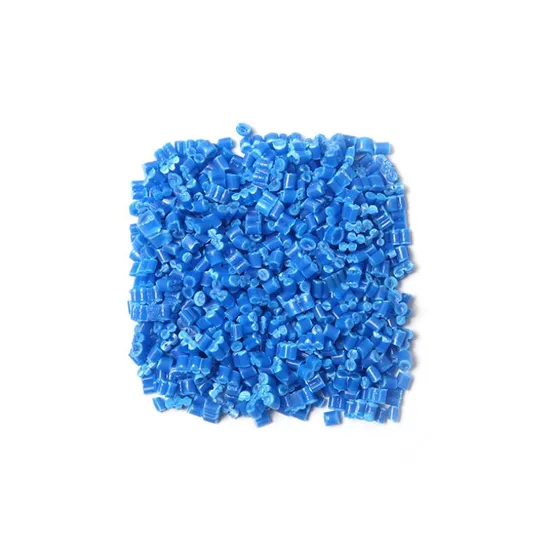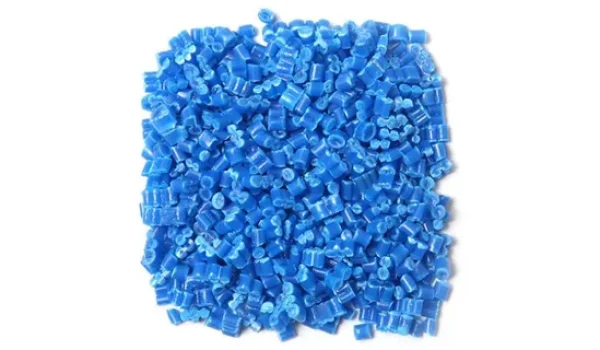Polypropylene is a versatile plastic material. It has unique properties that make it suitable for various applications. Knowing its properties is key to seeing if it works with the injection molding process.
The injection molding process is a common way to make things. It involves injecting molten plastic into a mold to create a shape. This process is efficient and cost-effective.
Understanding if polypropylene can be injection molded is important. This is because it allows for making many products quickly and accurately.
Exploring polypropylene and injection molding is essential. We need to know polypropylene’s properties to make sure the process works. By looking at polypropylene’s characteristics and the injection molding process, we can see if it’s a good fit.
Understanding Polypropylene Properties
Polypropylene is a versatile thermoplastic material used in many industries. It’s important to know its definition and what makes it special. This material is known for its excellent chemical resistance, low density, and high melting point.
Polypropylene is a thermoplastic polymer. It can be melted and reformed many times without changing much chemically. This makes it perfect for injection molding, as it can be shaped into complex forms easily.

What Is Polypropylene?
Polypropylene is a synthetic polymer made from propylene monomers. It’s relatively cheap to make, which is why it’s used in many areas. Its mix of properties, like chemical resistance, impact resistance, and flexibility, makes it great for different industries. This includes packaging, consumer goods, automotive, and industrial uses.
Key Characteristics of Polypropylene
Here are some key traits of polypropylene:
- High melting point: Polypropylene can handle high temperatures well, making it good for hot applications.
- Low density: It’s light and easy to handle because of its low density.
- Chemical resistance: Polypropylene stands up to many chemicals, like acids, bases, and solvents.
- Impact resistance: It’s also good at handling impacts, making it suitable for stressed or impacted areas.
The Injection Molding Process
The injection molding process is complex and requires precision. It involves stages from design to production. Understanding this process is key to grasping injection molding basics.
What Is Injection Molding?
Injection molding uses molten plastic to create shapes. It’s a common method for making many identical items. The process includes several important steps:
- Design: Creating a design for the product, taking into account the injection molding basics and manufacturing process requirements.
- Tooling: Creating a mold that can withstand the high pressures and temperatures involved in the injection molding process.
- Material selection: Choosing the right type of plastic for the product, considering factors such as durability, flexibility, and cost.
Step-by-Step Injection Molding Process
The actual injection molding process has several stages. These include injection, cooling, and ejection. Here’s how it works:
| Stage | Description |
|---|---|
| Injection | Molten plastic is injected into the mold. |
| Cooling | The plastic is allowed to cool and solidify. |
| Ejection | The finished product is ejected from the mold. |
Why Use Polypropylene for Injection Molding?
Polypropylene is a favorite for injection molding because of its many benefits. One big polypropylene advantage is its affordability. It’s a cost-effective material that offers great value for its price, appealing to many manufacturers.
Using polypropylene in injection molding comes with several practical perks. It’s easy to mold, flexible, and can handle fatigue well. Plus, it’s tough and can stand up to different environments.
Advantages of Polypropylene
- Cost-effectiveness
- Ease of molding
- Flexibility and resistance to fatigue
- Durability and resistance to environmental conditions
Cost-Effectiveness
Polypropylene is seen as a cost-effective material because it’s cheaper to make. Using it in injection molding can cut down on costs, making it a budget-friendly choice for makers. The polypropylene advantages in cost make it a top pick for many industries.
| Material | Cost-Effectiveness | Ease of Molding |
|---|---|---|
| Polypropylene | High | High |
| ABS | Medium | Medium |
| Polyethylene | Low | Low |
Typical Applications of Injection Molded Polypropylene
Polypropylene is used in many ways, from everyday items to industrial parts. Its flexibility makes it perfect for different fields. It’s great for making things like containers, toys, and car parts.
Some examples of polypropylene applications in consumer products include:
- Food packaging containers
- Household appliances
- Automotive interior components
- Medical devices
Polypropylene is also key in industrial settings. It’s used for making things like pumps and valves. This is because it can stand up to corrosion and chemicals well.
Polypropylene’s many uses show how versatile it is. It’s affordable, lasts long, and resists chemicals. Its role in both consumer goods and industrial parts highlights its value in today’s world.
Challenges in Injection Molding Polypropylene
Polypropylene molding faces several challenges like material flow, cooling rates, and part design. Troubleshooting these issues is key to successful production. Warping or uneven cooling can cause defective products.
To tackle these challenges, manufacturers can take several steps. Optimizing the mold design is vital for proper material flow and cooling. Using computer-aided design (CAD) software helps simulate the molding process and spot issues. Also, adjusting the processing conditions, like temperature and pressure, can prevent warping and uneven cooling.
- Warping or uneven cooling
- Material flow problems
- Part design flaws
To solve these problems, manufacturers can use various troubleshooting techniques, such as:
- Conducting thorough mold design reviews
- Implementing process monitoring and control systems
- Providing training to production staff on polypropylene molding challenges and solutions
By understanding and addressing common polypropylene molding challenges, manufacturers can enhance production quality and efficiency. This reduces waste and costs from defective products.
Optimizing Injection Molding for Polypropylene
To make high-quality polypropylene products, we need to fine-tune the injection molding process. This means using different techniques to boost molding efficiency. Designing the product right is key to making sure it can be molded well.
Design matters a lot. Things like part shape and draft angles are important. Good design helps avoid mistakes and makes the product better. Also, managing heat is critical for even parts. Using the right cooling and heating can stop problems like warping or sinking.
- Using advanced molding simulation software to predict and prevent possible defects
- Implementing a strong quality control system for consistent and accurate results
- Using special molds and tooling made just for polypropylene
By using these methods, makers can make their polypropylene products better and more efficient. This leads to happier customers, less waste, and more profit. As more people want high-quality polypropylene, making the molding process better will be key for businesses to keep up.
| Optimization Technique | Description |
|---|---|
| Design Considerations | Part geometry, draft angles, and other design factors that affect moldability |
| Thermal Management | Controlled cooling and heating techniques to achieve uniform parts |
| Molding Simulation Software | Predictive software to identify and prevent possible defects |
Environmental Impact of Polypropylene
Polypropylene is a common plastic used in many products. Its production and disposal harm the environment. Recently, there’s a push to make polypropylene more sustainable.
Making polypropylene needs a lot of energy and resources. This leads to greenhouse gas emissions and climate change. Also, throwing away polypropylene products can pollute and harm wildlife. But, there are efforts to make polypropylene production and disposal better.
Is Polypropylene Eco-Friendly?
Polypropylene can be good for the environment if made and thrown away right. Companies are working on being more eco-friendly. They’re using green energy and making biodegradable polypropylene.
Recycling Polypropylene
Recycling polypropylene helps the environment a lot. It can be turned into many useful things like packaging and car parts. Companies are investing in recycling to cut down waste and save resources.
Recycling polypropylene has many benefits:
- It saves natural resources.
- It cuts down greenhouse gas emissions.
- It reduces plastic waste.
- It makes new products from old ones.
The environmental impact of polypropylene is big, but we’re making progress. By recycling and making production better, companies can lessen polypropylene’s harm. This helps us move towards a greener future.
| Benefits of Recycling Polypropylene | Description |
|---|---|
| Conservation of Resources | Recycling polypropylene helps to conserve natural resources, such as oil and gas. |
| Reduction of Greenhouse Gas Emissions | Recycling polypropylene can help to reduce greenhouse gas emissions and mitigate climate change. |
| Decrease in Plastic Waste | Recycling polypropylene can help to decrease plastic waste and reduce the amount of waste sent to landfills. |
Comparing Polypropylene with Other Materials
When looking for plastic alternatives for injection molding, comparing materials is key. Polypropylene, ABS, and polyethylene are top thermoplastics with different features and uses. Knowing their strengths and weaknesses helps makers pick the right material for their products.
Cost, durability, and performance are critical in material comparison. Polypropylene is cheap, light, and flows well, making it great for packaging and everyday items. ABS, on the other hand, is tough and often used in cars and gadgets.
It’s also important to think about the environment. As people care more about the planet, makers should choose eco-friendly materials. Polyethylene, for example, is recyclable and works well in many fields, from packaging to farming.
Each thermoplastic has its own good and bad points. By looking at cost, how well it performs, and its environmental effect, makers can decide wisely. Whether it’s polypropylene, ABS, or polyethylene, picking the right material is key to a product’s success.
- Polypropylene: cost-effective, low density, high melt flow rate
- ABS: superior impact resistance, widely used in automotive and electronics
- Polyethylene: recyclable, versatile applications in packaging and agriculture
In conclusion, comparing materials is vital for finding the best plastic alternatives for injection molding. By understanding the special qualities and uses of polypropylene, ABS, and polyethylene, makers can make top-notch products that meet market needs.
Innovations in Injection Molding Technology
Recent years have seen big changes in injection molding innovations. These changes have come from new technological advancements in machines, materials, and how we control the process.
These innovations have made a big difference in injection molding. They have improved:
- How efficient and productive we are
- The quality and consistency of our products
- How sustainable we can be and reduce waste
Advancements in Polymer Processing
New technologies have changed how we process polymers. This has led to the creation of advanced materials with special properties. Now, we can make injection molded products that are:
| Material | Properties | Applications |
|---|---|---|
| Polypropylene | Lightweight, durable, resistant to chemicals | Automotive, consumer goods, medical devices |
| Bioplastics | Biodegradable, renewable, sustainable | Packaging, disposable cutlery, bags |
Impact on Polypropylene Molding
The new injection molding technology has also changed polypropylene molding. Now, we can make high-quality polypropylene products more efficiently and consistently.
This has made polypropylene products more popular in many industries, like cars, consumer goods, and medical devices.
Conclusion: The Future of Polypropylene in Injection Molding
Polypropylene stands out because of its unique properties and cost-effectiveness. It’s a top choice in the injection molding world. The future looks bright for polypropylene, thanks to new processing methods and molding techniques.
Companies are always looking to improve how they use polypropylene in molding. New technologies will make the process better. This will lead to more uses for polypropylene in many industries.
In short, polypropylene’s great qualities and the latest in molding tech mean it’s here to stay. The future of polypropylene in injection molding is full of promise. It will keep finding new ways to help industries grow and save money.




